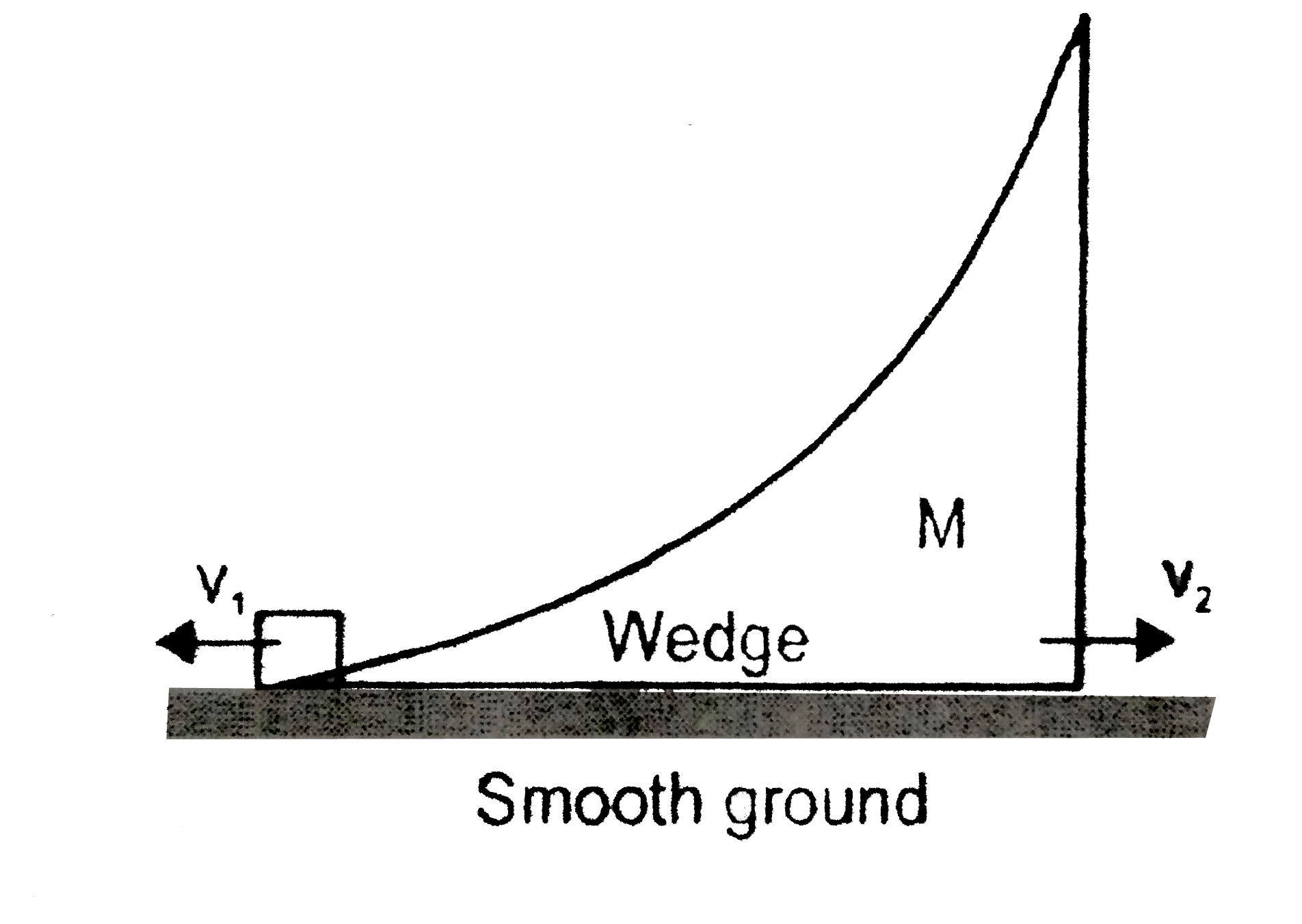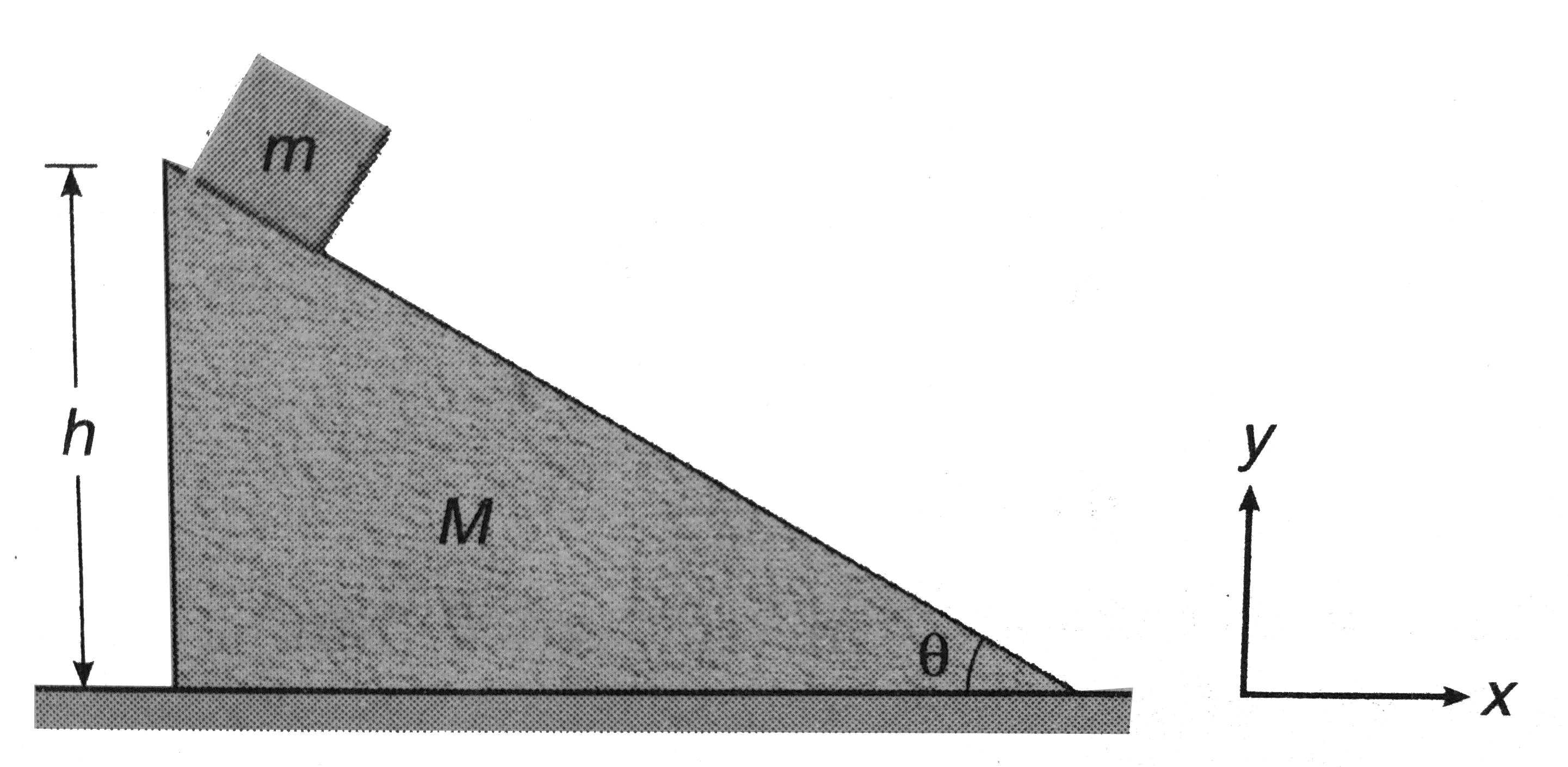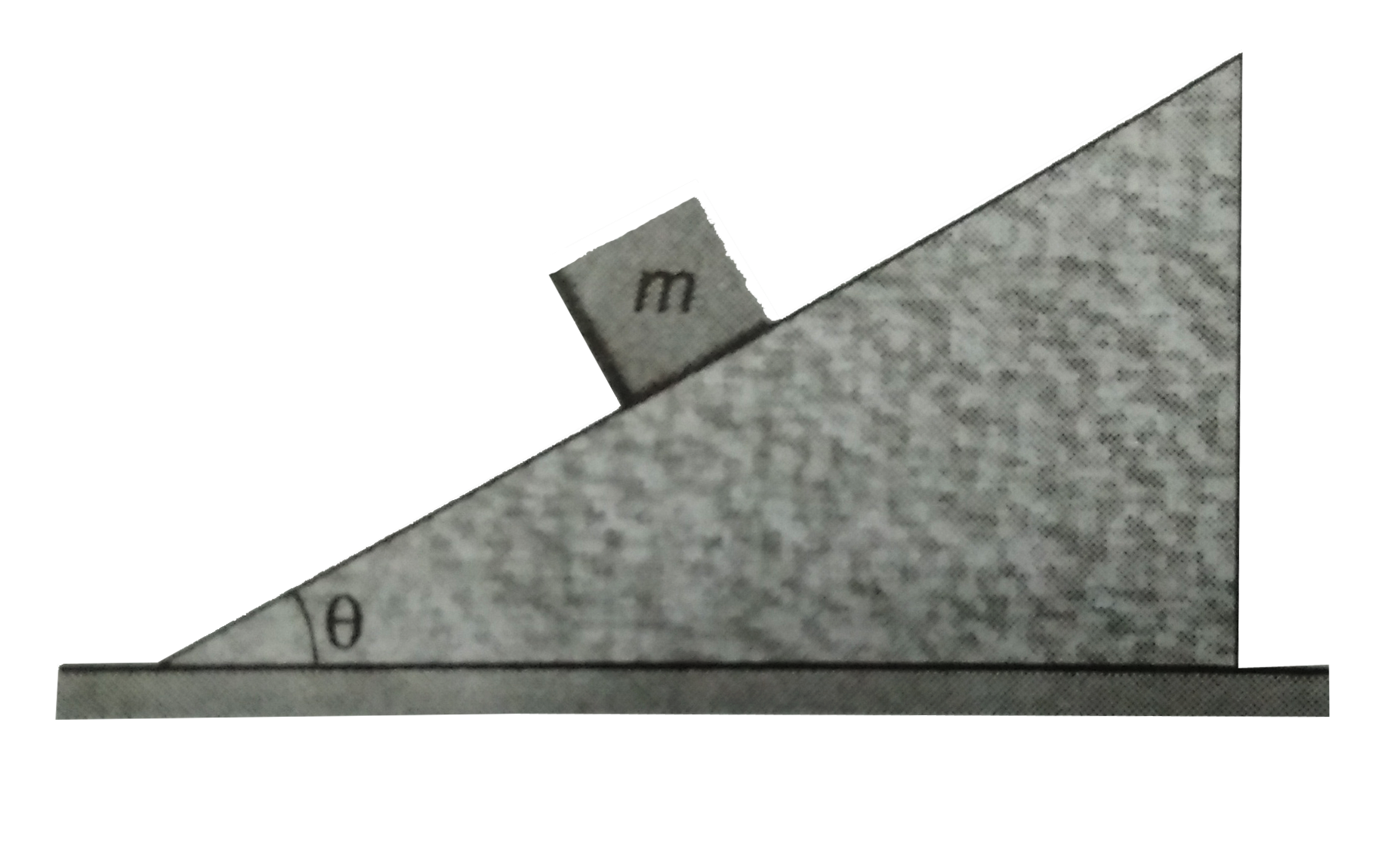A block of mass m slides down a wedge of mass M as shown . The whole system is at rest , when the height of the block is h above the ground. The wedge surface is smooth and gradually flattens. There is no friction between wedge and ground.

If there is no friction any where, the speed of the wedge, as the block leaves the wedge is :
m√2gh(M+m)M
M√2gh(M+m)m
(√2gh)mM+m
(√2gh)MM+m
The correct Answer is:A
Linear momentum is conserved only in horizontal direction.
mv1=Mv2…..(i)

12mv21+12Mv22=mgh....(ii)
From (i)&(ii),v2=m√2gh(M+m)M
Similar Questions
Knowledge Check
A block of mass m slides down a wedge of mass M as shown . The whole system is at rest , when the height of the block is h above the ground. The wedge surface is smooth and gradually flattens. There is no friction between wedge and ground.

If there would have been friction wedge and block , which of the following quantities would still remains conserved ?ALinear momentum of the system along horizontal directionBLinear momentum of the system along vertical directionCLinear momentum of the system along a tangent to the curved surface of the wedgeDMechanical energy of the systemA block of mass m slides down a wedge of mass M as shown . The whole system is at rest , when the height of the block is h above the ground. The wedge surface is smooth and gradually flattens. There is no friction between wedge and ground.

As the block slides down, which of the following quantities associated with the system remains conserved ?ATotal linear momentum of the system of wedge and blockBTotal mechanical energy of the complete systemCTotal kinetic energy of the systemDBoth linear momentum as well as mechanical energy of the system.A block of mass m is placed on a smooth wedge of inclination θ & mass M. The whole system is slip on the wedge. Then the normal reaction on the wedge acting from the ground :
A(M+m)gB(M+msinθ)gCMgD(M+msinθM+m)gcosθ
A block of mass m is released from a wedge of mass m as shown in figure . Find the time taken by the block to reach the end of the wedge.

View SolutionA block of mass m slides down on inclined wedge of same mass m as shown in figure . Friction is absent everywhere . Acceleration of centre of mass of the block and wedge is

View SolutionA block of mass m is placed at rest on a smooth wedge of mass M placed at rest on a smooth horizontal surface. As the system is released

View SolutionA block of mass m is released from the top of a wedge of mass M as shown in figure. Find the displacement of wedges on the horizontal ground when the block reaches the bottom of the wedges. Neglect friction everywhere.

View SolutionCalculate angle of friction between wedge and block system is at rest M coefficient of friction between wedge and block.

View Solution


